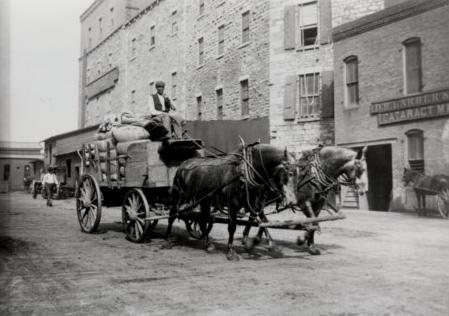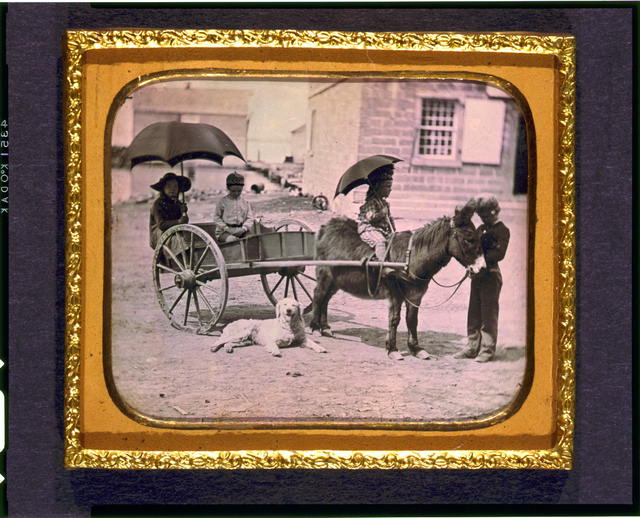|
....then work would have been the center of your life. You must remember, that in the early 1860's Minnesota was still a very
un-settled place. Farmers often settled as much as 10 or more miles from one another, and although there were plenty of small
towns (and even two major cities, St. Paul and Minneaplois) most farmers still lived largely on what they could raise in crops
and livestock. As such, EVERYONE in the family living on a farm must lend at the chores-and there is A LOT TO DO!
What sort fo things would you do if you grew up on a farm? Well, there are really two kinds of chores you might be expected
to help with; House or Farm chores. Let's look at the House chores first.
What's to do in the house? Cleaning, washing (both laundry and dishes); remember that you can't call out for a pizza,
so if you want dinner later you have to prepare for your meals through the day; mending AND MAKING clothes; tending the household
garden, taking care of younger brothers and sisters (the average farm family in Minnesota had as many as 6 children-but sometimes
MORE); ensuring food is stored properly and putting away new supplies for the season; tending the stove (remember that your
stove is wood burning at this point) AND chopping wood for the stove; making of candles and soap, and that's the SHORT list!
Then you have the Farm Chores.You must tend all the animals (you might have had pigs, cattle, milk cows, oxen, horses,
sheep, chickens, geese, bees, and don't forget all your barn cats and the watch dog!), keep after the buildings (fix and repair
damage), clear land of trees and shrubs and THEN plow it. Plant crops and gardens; build fences to keep rabbits, raccoon and
deer out; water the crops and pull weeds; don't forget to watch the weather and learn to understand how this new country will
treat your seeds as they grow in the ground-and that's not even counting HARVEST!
You might feel tired just reading these lists. Because of all the work that farms required of settlers, many farm kids
only went to school in the winter (part of the reason so many kids STILL have summers off in your time is because summer is
when kids used to not be available for school, since they were needed at home!) and would have had little time for play. That
doesn't mean they DIDN'T play, but a young person growing up on a farm had a lot of responsinbility that couldn't simply be
ignored easily. As hard as it is to imagine, if you grew up on a farm in the 1860's-you would actually LOOK FORWARD TO SCHOOL!
If nothing else, it was a break from work!
 
....when the work was done, then it was time for fun...
.....they may not have had video games, DVD's, Ipod's, or even 21st Century toy stores; but kids in the 19th Century knew
how to have fun! If you had lived in Minnesota in the 1860's, you might have enjoyed games like checkers (called draughts),
bilbo catchers (a cup and ball game), Ninepins (a small version of bowling using small wooden balls and pins), marbles, jump
rope, cracking the whip (see the picture on the right top side), ring around the rosie (the next picture down, on the right),
tag, hide and seek, or baseball (although a bit different than the baseball YOU are used to!). Kids then played with tops,
tin or lead soldiers, dolls, wooden swords and muskets might lead to an afternoon of playing Army; and home made kites could
be sent aloft to sail into the clouds. Above all, kids in the 1860's used their imaginations to give their play a spark of
excitement and fun that they may not have always found in their everyday lives. To you, living in 2006, their lives may seem
hard and not much fun. But remember, that the children of the 1860's never knew any other way of living-so to them it was
normal. Ask your parents what it was like when THEY were kids! You might be surprised just how much has changed, and also
how some things always stay the same.
|